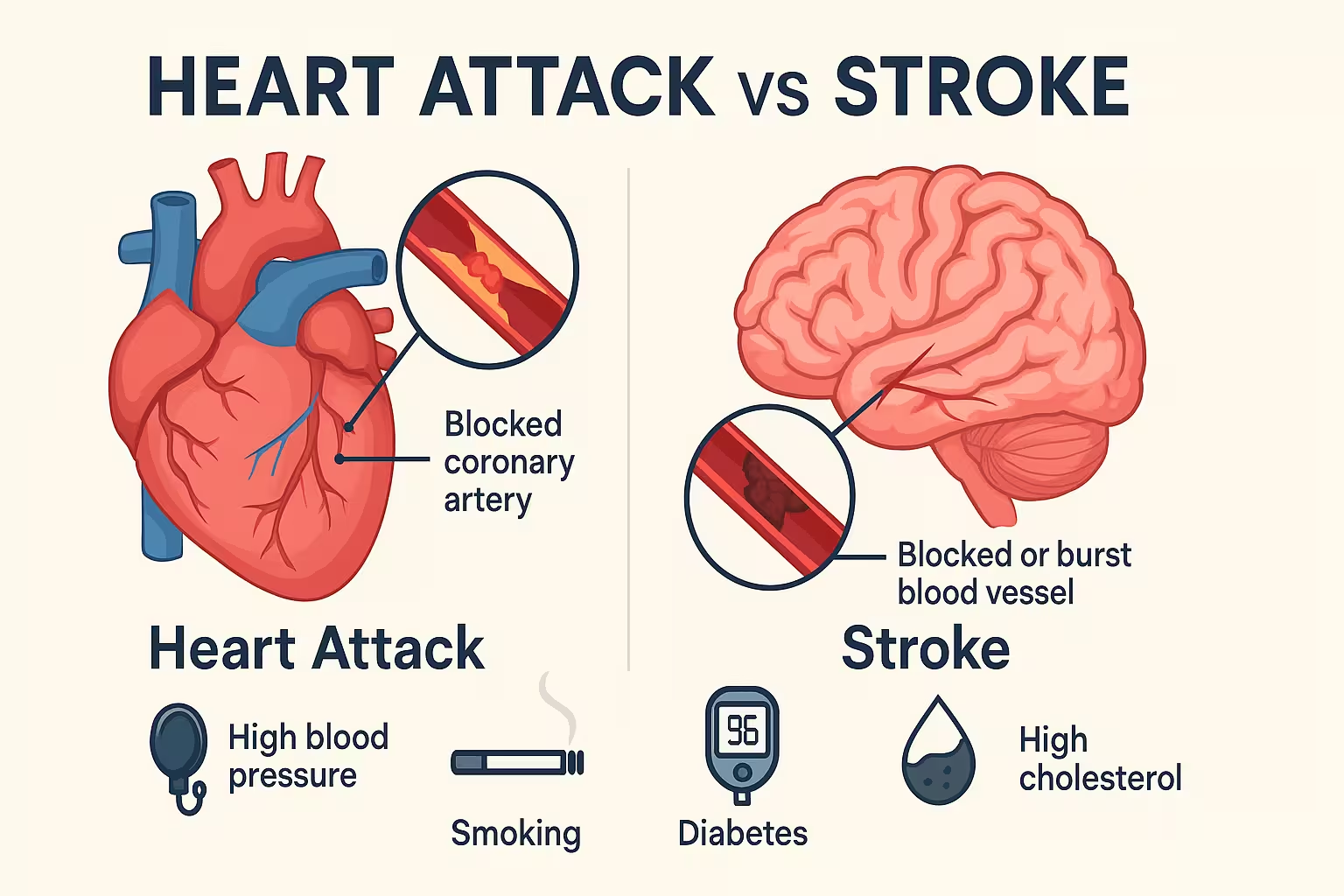Physical Address
304 North Cardinal St.
Dorchester Center, MA 02124
Physical Address
304 North Cardinal St.
Dorchester Center, MA 02124

Heart attacks and strokes are two of the leading causes of death globally, yet many people confuse them or fail to understand their differences. While both are cardiovascular events that involve a sudden disruption of blood flow, they affect different organs and have unique causes and risk factors. This article provides a medically accurate, research-backed comparison of the major causes of heart attacks and strokes, along with practical prevention strategies.
A heart attack, or myocardial infarction, occurs when blood flow to a part of the heart muscle is blocked. This blockage is usually caused by a build-up of plaque (a combination of fat, cholesterol, and other substances) in the coronary arteries. When the plaque ruptures, it can form a clot that blocks blood flow, causing damage to the heart muscle.
Read Also: Indian Air Force Medical Assistant Recruitment 2025 – Complete Details for Intake 02/2026
A stroke occurs when blood supply to part of the brain is interrupted or reduced, depriving brain tissue of oxygen and nutrients. There are two main types:
| Feature | Heart Attack | Stroke |
|---|---|---|
| Affected Organ | Heart | Brain |
| Main Cause | Blockage in coronary arteries | Blockage or rupture in brain arteries |
| Symptoms | Chest pain, shortness of breath, nausea | Face drooping, arm weakness, speech trouble |
| Onset | Gradual or sudden | Usually sudden |
| Immediate Risk | Heart muscle damage, cardiac arrest | Brain damage, paralysis, speech issues |
While the causes may differ slightly, the preventive steps for heart attacks and strokes often overlap.
High blood pressure is a major risk factor for both conditions. Monitor your blood pressure regularly and take prescribed medications as directed.
Reduce intake of saturated fats and increase consumption of fiber-rich foods. Statins may be prescribed if levels are high.
Keep blood sugar levels under control through medication, diet, and exercise.
Smoking cessation significantly lowers your risk. Seek medical help if needed.
At least 150 minutes of moderate aerobic activity per week helps maintain a healthy heart and vascular system.
The Mediterranean or DASH diets are especially beneficial. Focus on fruits, vegetables, whole grains, and lean proteins.
Excessive drinking increases blood pressure and can lead to both heart and brain issues.
Annual physicals help detect issues early, especially in people with family history or other risk factors.
Heart attacks and strokes are serious medical emergencies that share some risk factors but differ in cause, symptoms, and treatment. Understanding these differences—and acting on the shared risk factors—can save lives. Preventive healthcare, lifestyle changes, and staying informed are essential steps toward reducing your risk.
Read Also: 108 Names of Lord Shiva: Meaning, Significance, and Use in Spiritual Practice